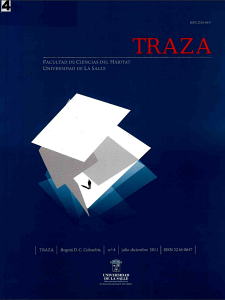Abstract
Architecture teachers are always looking for pedagogic and educational processes for students to amplify their creativity and generate correct answers to their environment and their intellectual, social, economic, political, sociological, anthropological, technical and technological context, among other, and, of course, so that all this input contributes to their training as architects. While teaching about architectural design and architecture in general, academic exercises are always simulations of real life situations; as a result, they carry a high dose of truth. This case is manifested in the production of tangible elements (built architectural objects) and in projected architectural elements. Those are the true answers that make an architect and mark their trends for the rest of their lives. This paper is the product of a series of reflections by the author during his experience as an architectural design professor for a period of eighteen years in the current Department of Habitat Sciences at La Salle University, and through the studies on pedagogy and teaching linked to the concepts of architectural education that emanate from the research “The pedagogical styles of architecture professors at La Salle University”.Downloads
Download data is not yet available.



